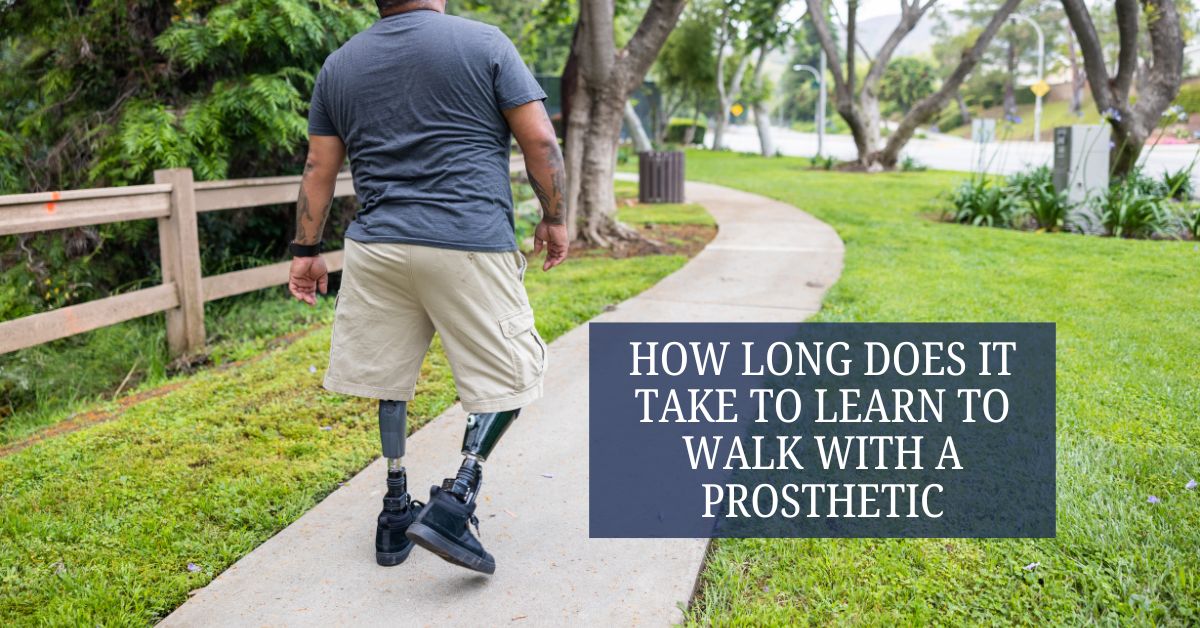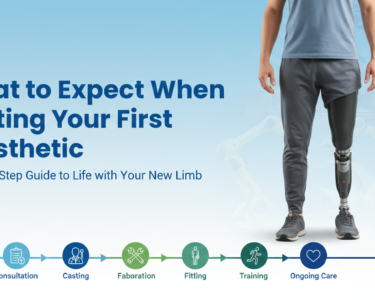When someone loses a limb, the journey to walk again can feel daunting. But with the help of prosthetics, many people are able to regain their ability to walk, move freely, and live an active life. However, learning to walk with a prosthetic leg is not something that happens overnight. It requires time, effort, and a lot of practice. So, how long does it actually take to learn to walk with a prosthetic leg?
In this article, we’ll break down the process of learning to walk with a prosthetic, the factors that affect how long it takes, and what you can expect during this important part of your recovery journey.
The Process of Learning to Walk with a Prosthetic Leg
The process of learning to walk with a prosthetic leg is gradual and takes place in several stages. Each stage helps build the foundation for walking naturally and safely.
1. Initial Fitting and Adjustment
Once the prosthetic leg is ready, it needs to be fitted properly. The prosthetist will ensure that the socket (the part that fits over the residual limb) is comfortable and provides a secure fit. A poorly fitted prosthetic can lead to discomfort, pain, or even injury, so this step is crucial.
During the initial fitting, the prosthetist may make small adjustments to ensure the leg feels comfortable and functions well. You’ll probably need to wear the prosthetic for short periods at first, to allow your body to get used to it.
2. Getting Used to the Feel of the Prosthetic
At the beginning, wearing a prosthetic can feel awkward. It might feel heavy or unbalanced as you move. For the first few days or weeks, you might only use the prosthetic for short periods to get used to the sensation of wearing it. It is essential to listen to your body during this time and take breaks as needed.
3. Rehabilitation and Physical Therapy
Physical therapy is one of the most important components of learning to walk with a prosthetic leg. A physical therapist will guide you through exercises designed to strengthen the muscles around your residual limb and help improve your balance. These exercises will also help you build the coordination and endurance needed to walk comfortably with your prosthetic leg.
During therapy, you’ll start practicing simple movements like standing and balancing on the prosthetic leg, gradually moving on to walking in a controlled environment. Your therapist will provide tips and guidance on how to move efficiently and comfortably. They may also work with you on specific movements, such as walking on different surfaces or climbing stairs.
4. Practice Walking
As you continue your rehabilitation, you’ll start to practice walking in different settings. At first, you may only walk a few steps, but as time goes on, you’ll start walking longer distances. Practice is key, and the more you practice walking with your prosthetic, the more natural it will feel.
You’ll start with walking in controlled environments, such as inside your home or in a gym, before gradually progressing to outdoor settings. This helps you get used to different terrains and obstacles that you may encounter in daily life.
5. Building Endurance
When you first begin walking with a prosthetic leg, you may feel fatigued more quickly than usual. This is normal, as your body needs time to build strength and endurance. As you continue practicing, your stamina will improve, and you’ll be able to walk for longer periods without feeling as tired.
6. Fine-Tuning Movement and Gait
Over time, with the help of a prosthetist and physical therapist, you will work on fine-tuning your gait (how you walk). Prosthetic technology has advanced significantly, and many modern prosthetics are designed to help mimic natural walking patterns. Fine-tuning your gait might include adjusting the alignment of your prosthetic or making minor changes to the prosthetic itself to improve comfort and efficiency.
Factors That Affect How Long It Takes to Walk with a Prosthetic
The time it takes to walk normally with a prosthetic leg varies depending on several factors:
1. Type of Amputation
The location and level of your amputation play a significant role in how long it takes to learn to walk. Below-knee amputations tend to take less time to adapt to than above-knee amputations, simply because there are fewer adjustments needed for the knee and hip joint. For people with above-knee amputations, additional training may be needed to help control the knee joint and maintain balance while walking.
2. Age and Health Condition
Your overall health and age can also affect how long it takes to learn to walk with a prosthetic. Younger individuals or those who are in good physical condition before the amputation may have an easier time regaining their ability to walk. On the other hand, older individuals or those with pre-existing medical conditions may take longer to build strength and endurance.
3. Prosthetic Type
The type of prosthetic you are using can impact your learning curve. Some prosthetic legs are designed for specific activities, such as running or hiking, while others are more general-purpose. High-tech prosthetics with advanced features like microprocessor-controlled knees and ankles may help some people walk more naturally, but they may require additional training and adjustment. Simpler prosthetics might be easier to get used to but may offer fewer features for improved gait and mobility.
4. Rehabilitation and Support
Your commitment to rehabilitation plays a crucial role in how quickly you can learn to walk with a prosthetic. The more effort you put into your physical therapy and training, the quicker you’ll likely improve. Support from a skilled prosthetist and physical therapist can help speed up the process, as they can make adjustments to the prosthetic as needed and provide valuable tips and motivation.
5. Motivation and Mental Health
Learning to walk with a prosthetic can be physically and emotionally challenging. Mental health is an essential part of the process, and having the right mindset can help speed up recovery. It’s essential to stay motivated, set achievable goals, and have a positive attitude. Support from family and friends can also make a big difference in your recovery journey.
How Long Does It Take to Learn to Walk with a Prosthetic?
While the exact time varies, many individuals are able to begin walking with a prosthetic leg within a few weeks to a few months of receiving their device. However, learning to walk “normally” can take anywhere from 6 months to a year, depending on the factors mentioned above.
It’s essential to understand that everyone’s experience with prosthetics is unique. Some individuals may walk independently fairly quickly, while others may need more time for practice, therapy, and adjustment. The most important thing is to stay patient, committed, and seek professional support throughout the process.
Take a Step Ahead
Learning to walk with a prosthetic leg is a gradual process that takes time, effort, and determination. Factors such as the type of amputation, prosthetic used, trusted prosthetics manufacturer in India, physical health, and commitment to rehabilitation all play a role in how quickly you’ll learn to walk. With the right support, therapy, and practice, most people can regain the ability to walk confidently and live a fulfilling life.
Remember, the journey may take time, but with each step, you’re getting closer to regaining independence and mobility.
Disclaimer: The information provided in this article is for general knowledge and educational purposes only. It should not be considered medical advice, diagnosis, or treatment. Prosthetic solutions vary based on individual needs, medical conditions, and professional recommendations. Always consult with a certified prosthetist, healthcare provider, or medical professional for personalized advice and the best prosthetic options for your specific situation.








